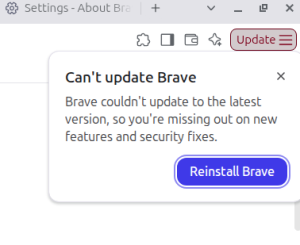Interview with Dr. Elyar Sedaghati on Titanium Oxide in Wasp-19b’s Atmosphere
A scientific research team recently announced the discovery of titanium oxide in Wasp-19b’s atmosphere. Wasp-19b is a “hot Jupiter” exoplanet that orbits a star about 815 light years from Earth. For this interview, I caught up with research team member Dr. Elyar Sedaghati, who works with the European Southern Observatory’s Very Large Telescope installment in Chile.
HH: Today we’re here with Dr Elyar Sedaghati, I know I got that wrong, how are you doing today?
Sedaghati: I’m doing fine. Just recovering from my trip back from Paraná, but everything is fine.
HH: I understand that you’ve been observing the atmosphere of the hot Jupiter known as Wasp 19b. Can you tell me what is unique about this exoplanet that makes it such an interesting target for study?
Sedaghati: Yes. So this is a hot Jupiter. Basically what that means is that the planet is roughly the size of the Jupiter but it’s very close to the size of its host star, so close that if it was any closer it would be torn apart by the gravity from its host and because it’s so close it receives so much radiation, and its equilibrium temperature is very high. That basically means that it has a very extended atmosphere that goes up far from the planet and this basically allows us to actually probe the atmosphere, allows us to see what the species are in the atmosphere because of what we call the scale heights. So that’s what makes it quite interesting.
HH: What makes the presence of titanium oxide in the atmosphere so unusual for a planet?
Sedaghati: It doesn’t actually make it unusual, it’s the fact that it’s been so hard to find. In a paper in 2008 by a couple of professors in Santa Barbara, they actually predicted the presence of metal oxides, which titanium oxide is one, in the atmosphere of these highly irradiated planets. You expect that because of the high temperature these heavier element with that heavier molecules will be mixed to the higher parts of the atmosphere, and so in the intake and the output of solar energy, the presence will actually shape the intake and the output of energy that the planet receives. This actually makes it possible to put some constraints on the priors that we have, prior knowledge that we need in order to create atmospheric models for atmospheres, so it’s not that it’s like also titanium oxide itself is all that rare in a hot Jupiter.
I feel that titanium oxide is actually quite rare on Earth. It’s not something that we see on a terrestrial planet. Actually we see titanium dioxide which is basically the engine, for example, something that absorbs UV radiation and invisible radiation, but titanium oxide is actually something that we see in stars quite a lot and so their presence is not actually a surprise. It was actually difficult to get them because you need very good observation and very precise what we call transit life curves in other to be able to detect this heavier elements because their signature in the transition spectrums is not quite as strong as atoms.
HH: What makes the European Southern Observatory’s Very Large Telescope especially useful for this study?
Sedaghati: Okay, there is a combination of factors, so as you know the VLT is not the biggest telescope in the world in both individual ones, but as an observatory and in terms of the time that the instrument that we use at that telescope it is the most advanced observatory in the world. What we do in observation is that we need to perform a spectroscopy at very high resolution.
What that means is we basically typically took around 400 spectra in a space of two to three hours or so, which means that in other to be able to get a lot of signal in a short time, we need a very large telescope to collect a lot of light. So we solve that problem by having the telescope point to a specific region in the sky for a long period of time, and also we need dedicated instruments that are able to perform this sort of study, and the instrument that we’ve been using here is what makes it usable for this science case. It’s that you’re able to actually obtain simultaneous spectra for planets that actually have a large atmosphere around it, as well as a lot of other stars in the field if view of the telescope, and you need that in other to correct for atmospheric Imprint on the light curve because if you don’t have that curve it would be impossible to perform the study because of course as we observe the star. the star goes through an arc in this time and atmospheric turbulence and of course atmospheric.
So basically where the star is in the path it takes along the site, it creates a very unusual pattern of action. We need what we call reference stars in order to correct for these changes in other to get the light curves that you’ve probably seen in the paper. I mean, there are only a hand full of telescope and instruments that are able to do this kind of study and, used to in combination with the VLT, has been instrumental in the success of a bunch of studies on the ground.
HH: So can you tell me about this new technique for analyzing an exoplanet atmosphere that you developed and do you think it will be used for the observation of other planet?
Sedaghati: Okay so I must say that’s the method we’ve been using wasn’t developed by me. This method uses machine learning and what is called the Gaussian process in order to include any systematic trends that we have in our transit light codes. So this method has been used in other fields of science for a long time. It was my collaborators a few years ago in 2012 that wrote a paper to show its application to analyzing time series data. So we basically built on that technique and this is something that’s, basically, there are two different schools of thought as to how to deal with systematic trend light curves and we believe that ours is more comprehensive as opposed to others because it’s a non-parametric approach that is quite conservative in the precision in our measurements because it is really the precision that determines the significance of the dissections, any dissections that you have.
It’s important that you explain to the reader that basically the way you derive the precision in the data points is conservative and is realistic and we believe that the methods that we use, it basically needs physical inputs so things that could possibly cause a resistance from the light codes be it from the light curves or from the telescope or from the atmosphere we use that to model our systematic transcode as opposed to methods that basically just apply some blind function.
So that’s why we hope that when the community has applied these sort of techniques to doing this sort of analyses and people will start developing more and more sophisticated ways of defining what we call the covariance matrix that describes the correlated noise in the data. So I mean that this is what we must do at the beginning of detecting and analyzing an exoplanet atmosphere. The future is very bright for this field especially with the upcoming James Webb Space Telescope from NASA because that’s then moment we can do this sort of study from space with the Hubble Space Telescope. Ideally we want to do this kind of study using a telescope in space because, if you’re going to do this from space, you actually don’t need those reference stars that I was talking about and the light is a lot cleaner and semantic trends are a lot less.
The problem with the Hubble is that it is always spinning around the Earth at a period of a few hours and the problem is when we are trying to observe the transit of an exoplanet that’s four to five hours we have gaps in the coverage of the transits and of course also have systematics because of the phase that is at that Hubble is observing. But if we have the James Webb Space Telescope that’s not going to be the case. Webb is actually going far away from the Earth and it won’t be spinning around the Earth. It will be placed at a kind of equilibrium point between the Earth and the sun and the moon system called Lagrangian point two.
So, the James Webb Space Telescope, first of all, will be able to completely cover entire transits. It will have its 6 meter mirror in space as opposed to Hubble’s 1 meter, so it will have a much large collecting area and of course it also works in infrared, where all the interesting stuff happens. So any possible sign of life that could be on any planets generally as far as we can guess it should be able to detect any infrared. I’m not saying that they will be able to detect it. I think we’re a couple of generation away in terms of instrumentation to get to that sort of observations but we are, I mean we are getting there, we are getting towards observations where we can actually detect and analyze atmosphere of rocky planets that are in the habitable zone of their host star, so planets that could possibly our life if they are harboring them, we should be able to detect their signs in their atmospheres.
So hopefully, the primary goal is a better understanding of planetary evolution and planetary formation, but eventually it will also provide us with a path to actually detect possible bio signatures in exoplanet atmospheres. So that’s why I think it’s a great science case and is quite exciting and it’s worth investing more time and effort into it.
HH: Well, thanks for joining us.
Sedaghati: No problem, it’s always my pleasure.





